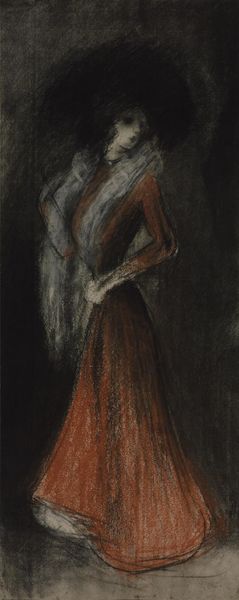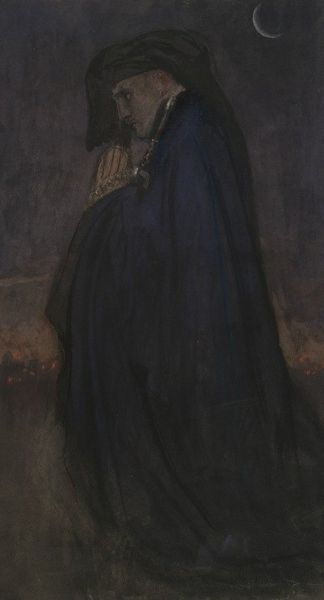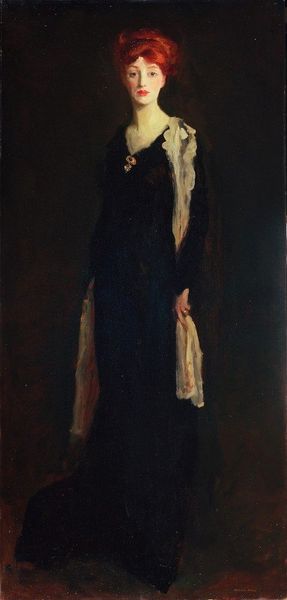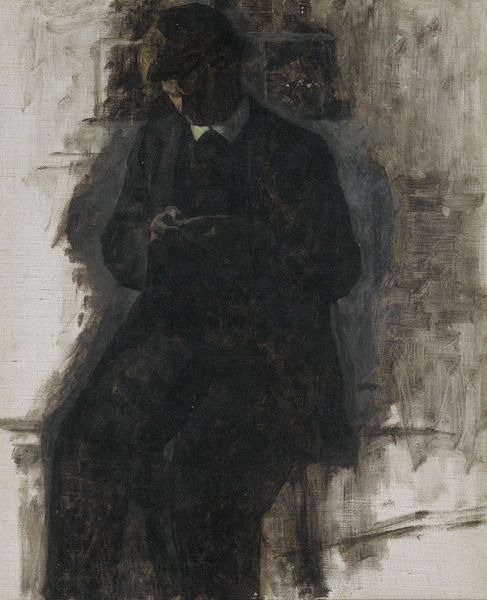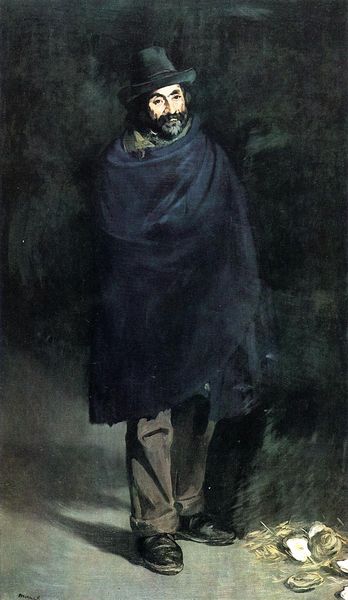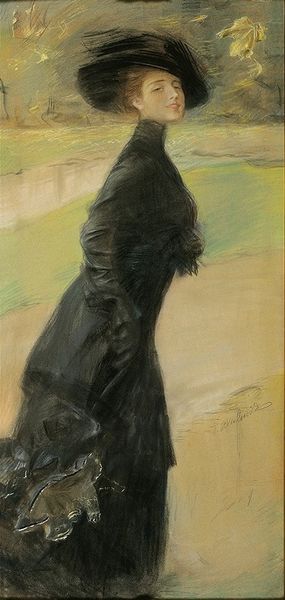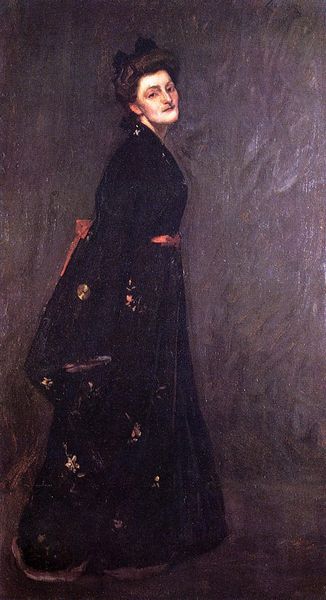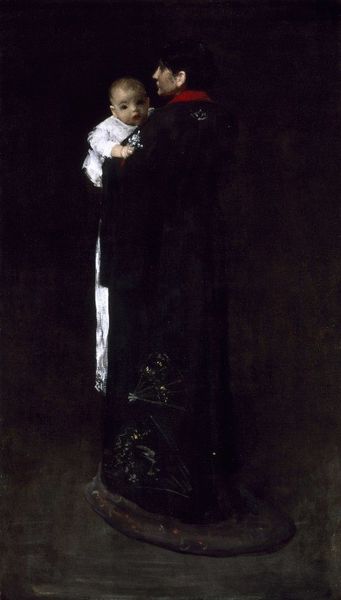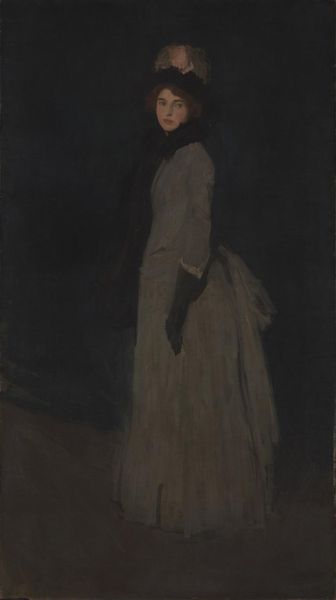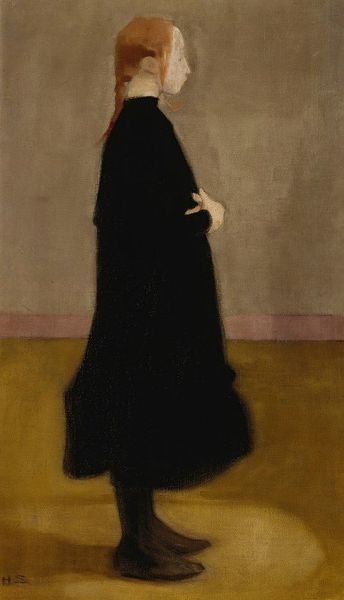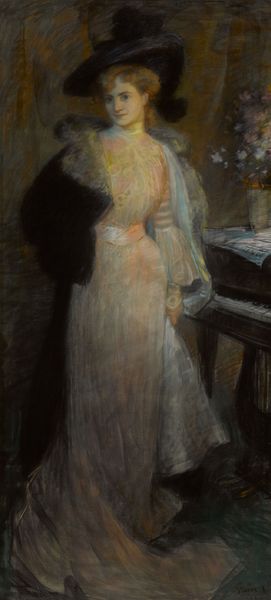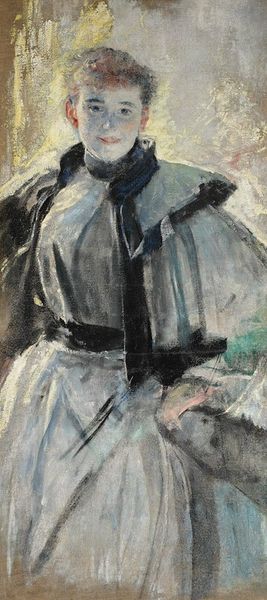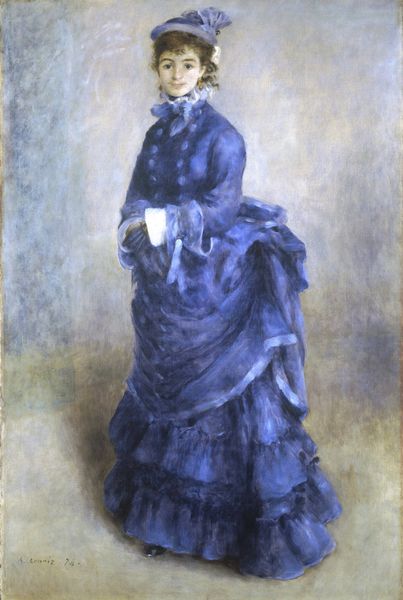
Dimensions: support: 1232 x 597 mm
Copyright: © The estate of Sir William Rothenstein. All Rights Reserved 2010 / Bridgeman Art Library | CC-BY-NC-ND 4.0 DEED, Photo: Tate
Curator: Here we have Sir William Rothenstein's "Miss Edith Lockyer Williams," currently housed in the Tate Collections. Notice the scale; the support measures 1232 x 597 mm. Editor: My first thought? Haunting. She looks like she's about to tell me my future, and I'm not sure I want to hear it. All that black! Curator: The somber palette reflects a prevalent aesthetic of the period, emphasizing the burgeoning industrial revolution's impact on material culture and color production. Editor: I bet that gown was expensive, and difficult to move around in, like wearing a shadow. It’s interesting to consider how the textile industry shaped social experiences, wouldn't you say? Curator: Exactly. The texture of that gown, probably silk or velvet, suggests luxury and social status, while that simple red ribbon adds a bit of understated rebellion, if you ask me. Editor: I see it. Looking at Miss Williams, it feels like peering into a secret, a hushed moment captured forever. This one is going to stay with me. Curator: Indeed, there's a power in those quiet observations of material culture.
Comments
tate 7 months ago
⋮
http://www.tate.org.uk/art/artworks/rothenstein-miss-edith-lockyer-williams-n05407
Join the conversation
Join millions of artists and users on Artera today and experience the ultimate creative platform.
tate 7 months ago
⋮
Rothenstein lived for four years in Paris from the age of seventeen. His artist friends were modern portrait painters: Whistler, Conder, Toulouse-Lautrec and the caricaturist Phil May. He returned to Britain with a commission to make prints of the dons at Oxford, which he published as 'Oxford Characters'. This portrait of Miss Williams was a commission from her brother. Both of them were academics, and became teachers. It was Rothenstein's first portrait on his return, painted in a studio he borrowed in Chelsea, which had been one of Sickert's. The portrait is deliberately eccentric, in its tall format, sharp lighting, her pose on the move, but most of all in the unflattering portrayal of the subject. It was never exhibited. Gallery label, August 2004
